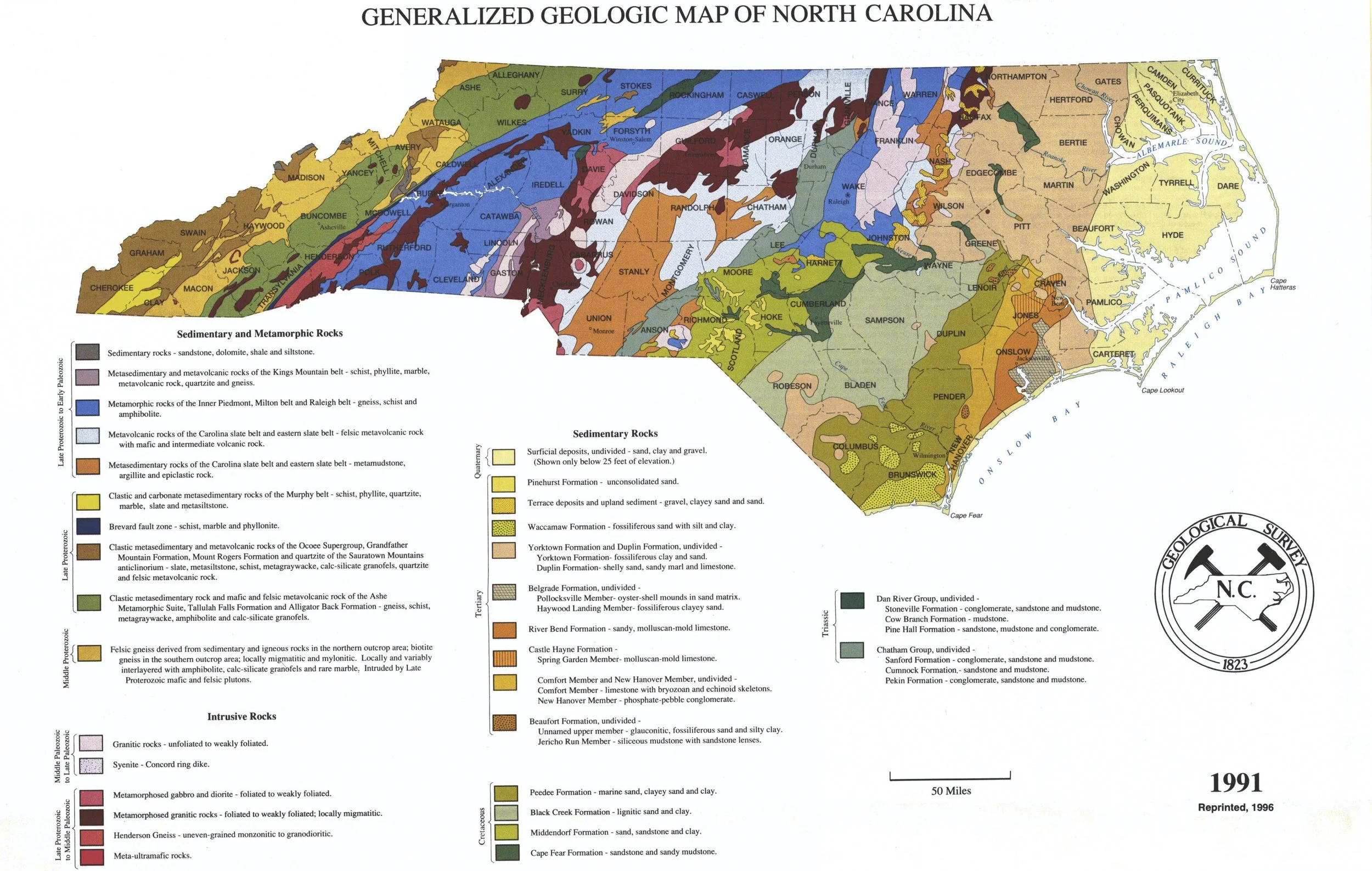Soils of NC
Let’s talk soil—North Carolina soil, to be exact. From the sandy shores of the coast to the clay-packed Piedmont and the crumbly loam of the mountains, our state is basically a soil sampler platter. Whether you’re a gardener, farmer, or just someone who’s accidentally tracked half your yard into the house, you’ve probably noticed that not all dirt is created equal.
Along the coast, you’ll find sandy soils that drain faster than you can say “Beach weekend!” Perfect for plants that hate wet feet, like rosemary and yucca, but they’ll need a little organic matter to hold onto nutrients. Head inland and you’ll hit the Piedmont’s famous red clay—beautiful, stubborn, and sticky. It’s rich in iron and minerals but can be a bit of a workout for gardeners. Add compost and grit, and suddenly that tough clay becomes a champion for perennials and native plants. Keep traveling west and the soil softens again into mountain loam, a dreamy mix of sand, silt, and clay that makes gardeners swoon. It’s fertile, well-draining, and just about perfect for everything from rhododendrons to veggies.
Below is a fun, practical list of tips for amending North Carolina’s main soil types—because a little love (and compost) can turn any patch of dirt into a gardener’s dream:
Coastal Sandy Soils
Add organic matter—compost, leaf mold, or aged manure—to help sandy soil hold moisture and nutrients.
Mulch, mulch, mulch! It keeps the soil cool and slows evaporation.
Use slow-release fertilizers—they’re less likely to wash away.
Try coastal natives like sea oats or muhly grass that already thrive in loose, quick-draining soil.
Piedmont Red Clay Soils
Break up compaction by tilling in compost or pine fines—this helps air and roots move freely.
Avoid working wet clay! It clumps and hardens like bricks.
Add gypsum to improve structure without changing pH.
Plant deep-rooted natives like black-eyed Susans or switchgrass that help naturally loosen the soil over time.
Mountain Loam Soils
Protect what you’ve got! Loamy soils are gold—maintain them with yearly compost topdressing.
Watch for erosion on slopes—use mulch, groundcovers, or terracing to keep that good soil in place.
Check acidity—mountain soils often lean acidic, so lime may be needed for veggies or lawns.
Use cover crops in the off-season to keep nutrients cycling and prevent washouts.
Bonus Tip:
Wherever you are, test your soil every few years. NC State’s Extension Service offers free soil testing most of the year—and knowing your pH and nutrient levels is like getting a health check-up for your garden!


